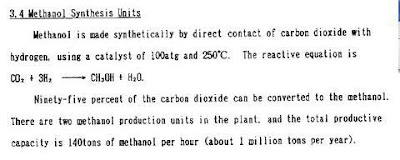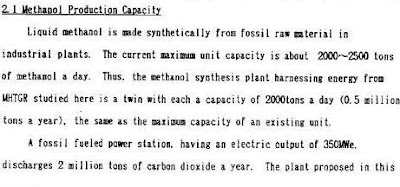
The two types of energy production, fossil and nuclear work together in order to produce energy and recycle the by products of combustion, carbon dioxide.

Looks like a simple reaction, as explained below:
Then recycle the carbon dioxide from the hydrolyzing of methanol at the distribution point for hydrogen. The hydrogen can be used in fuel cells. The hydrolyzing of methanol allows methanol to become a convenient way of transporting hydrogen for use in fuel cells. The process can be used to collect carbon dixode as well as hydrogen. The hydrogen gets used in the fuel cell, the carbon dioxide goes back to be recycled back into methanol, as indicated above. This will close the loop and make the process carbon neutral.




No comments:
Post a Comment